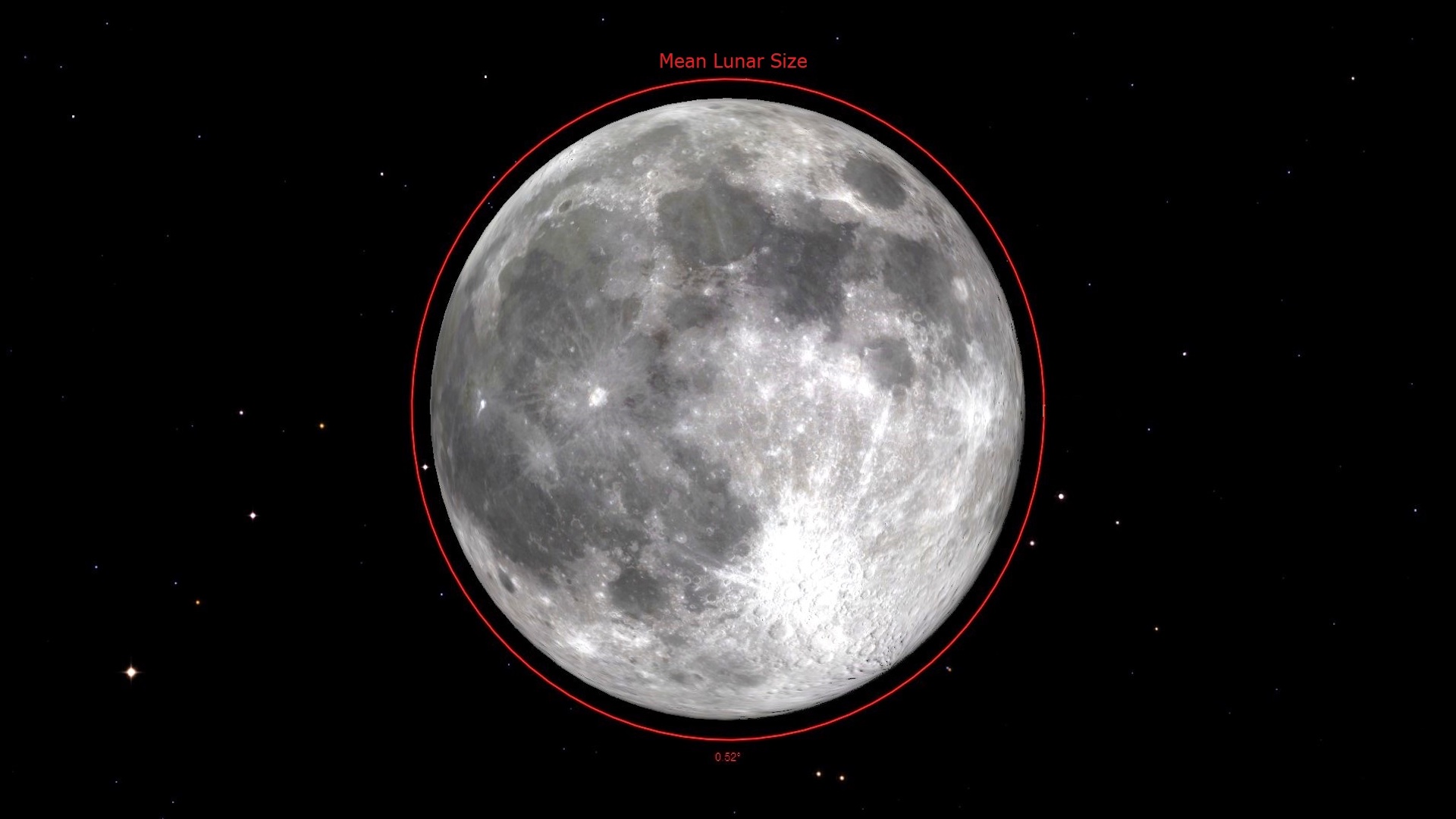The Full Snow Moon of 2023: Smallest 'micromoon' of the year rises tonight
Braving the cold February evening will be worth it.

It might be cold outside, but witnessing a full moon is always a treat for skywatchers — particularly when it's a special one.
February's Full Snow Moon rises on Sunday (Feb. 5) and will be the smallest full moon of the year, thanks to the current position of the moon in its orbit. Its distance from Earth will make this Snow Moon a "micromoon," the opposite of a supermoon. While most observers won't be able to tell a difference with the unaided eye, this month's full moon will appear up to 14% smaller than a supermoon.
The Full Snow Moon will occur Sunday at 1:28 p.m. (1828 GMT) and will be positioned in the Leo constellation. In New York City, the full moon will rise at 5:10 p.m. (2210 GMT) and will reach its highest point in the sky just after midnight. For skywatchers who don't want to brave the cold February evening to see the full moon, the Virtual Telescope Project will host a free telescope livestream beginning Sunday (Feb. 5) at 11 a.m. EST (1600 GMT).
Related: February full moon 2023: The Snow Moon rises with Jupiter, Mars and Orion
Read more: Full moon calendar 2023: When to see the next full moon

Want to see some detail on the Full Snow Moon? We recommend the Celestron Astro Fi 102 as the top pick in our best beginner's telescope guide. Don't forget a moon filter!
February's Full Snow Moon might technically be a micromoon, but it will nonetheless shine brightly in the night sky. While the light of the full moon will obscure some dimmer and more distant objects from view, the skies will also be graced on Sunday night by the presence of several bright planets.
Jupiter will be bright and well-positioned for viewing for most of the night for skywatchers in mid-northern latitudes that include the United States, as will Mars. From New York City, Jupiter should appear in the southwestern skies around 7:00 p.m. local time and will set around 9:30, while Mars will be to the south. At around 6:00 p.m. EST (2300 GMT), Venus will be very bright in the evening sky until it sets some 90 minutes later.
While you're out gazing at the bright full moon, be sure to look over at the Orion constellation. The Hunter is visible for most of the night throughout February and will begin high in the east-southeast each night. Taurus and Gemini will be visible near Orion, as will Canis Major, home of the brightest star in the sky, Sirius. Each of these constellations will be bright enough to not be overwhelmed by the light of the full moon, even in areas with light pollution.
Get the Space.com Newsletter
Breaking space news, the latest updates on rocket launches, skywatching events and more!
If you want to get some great shots of February's Full Snow Moon, be sure not to miss our guide on how to photograph the moon for the best lunar photography tips and tricks we've found. We also have guides on the best cameras for astrophotography and best lenses for astrophotography if you need to gear up for this or other celestial events.
Editor's Note: If you catch a great photo of the Full Snow Moon and would like to share it with Space.com's readers, send your photo(s), comments, and your name and location to spacephotos@space.com.
Follow Brett on Twitter at @bretttingley. Follow us @Spacedotcom, or on Facebook and Instagram.
Join our Space Forums to keep talking space on the latest missions, night sky and more! And if you have a news tip, correction or comment, let us know at: community@space.com.

Brett is curious about emerging aerospace technologies, alternative launch concepts, military space developments and uncrewed aircraft systems. Brett's work has appeared on Scientific American, The War Zone, Popular Science, the History Channel, Science Discovery and more. Brett has English degrees from Clemson University and the University of North Carolina at Charlotte. In his free time, Brett enjoys skywatching throughout the dark skies of the Appalachian mountains.









